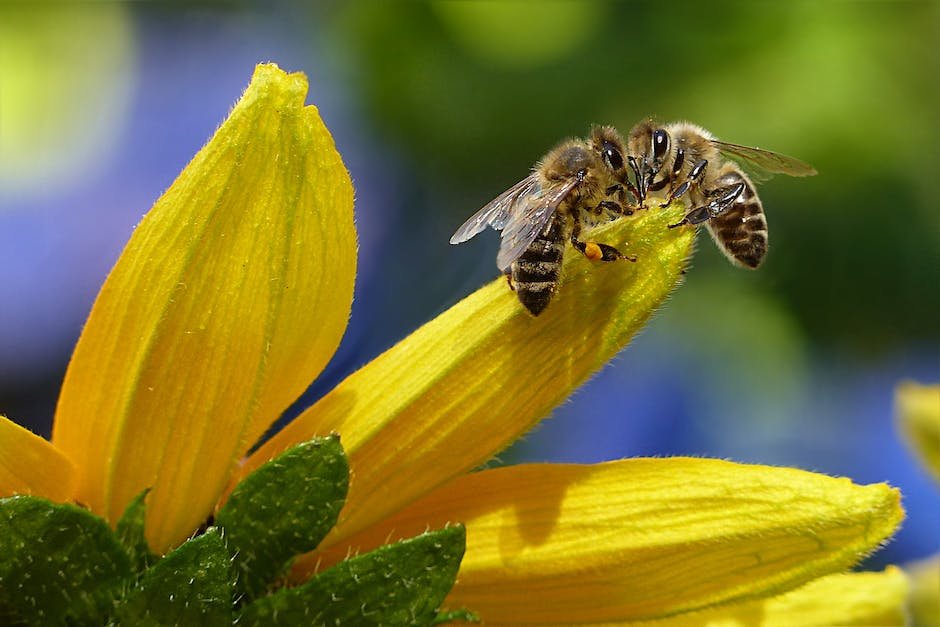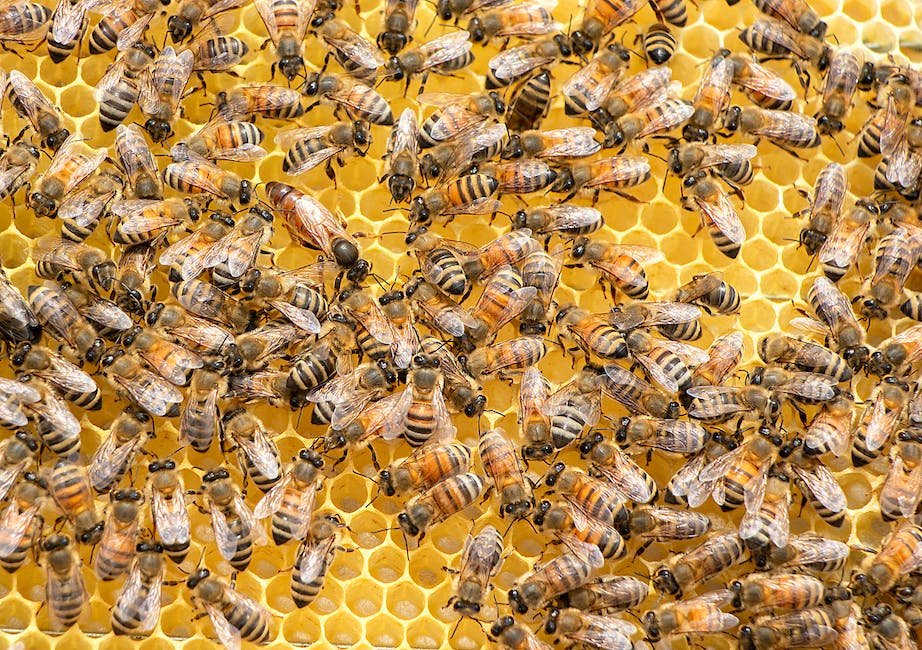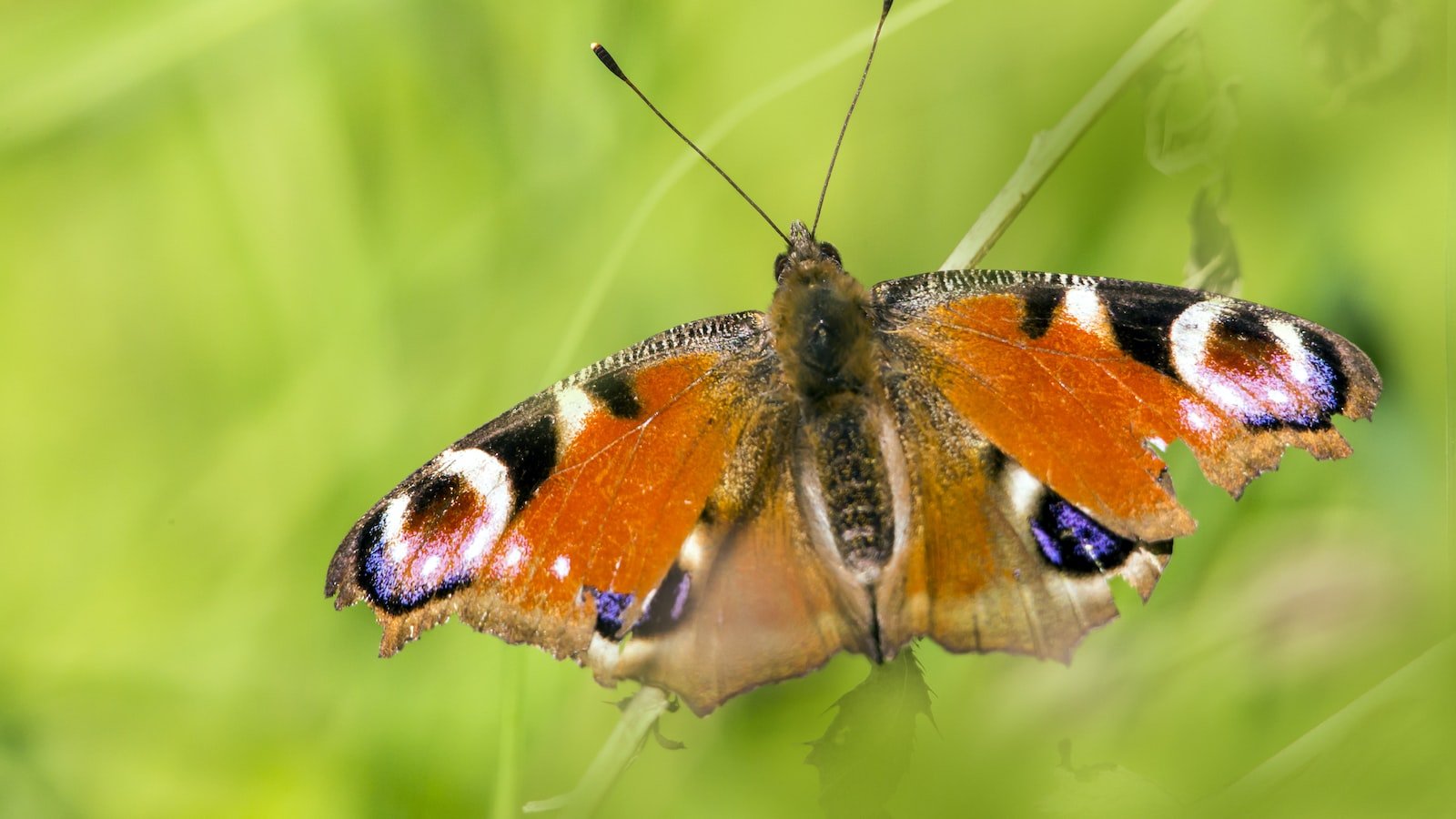Among the glorious tapestry of nature, where colorful blooms dance in harmony and the gentle buzz of pollinators fills the air, lies a compelling truth: bees are the unsung heroes of our planet. These tiny creatures, armed with their delicate wings and industrious spirits, diligently go about their crucial task of pollination, ensuring the survival of countless plant species. However, in an era encumbered by rapid urbanization and environmental threats, our buzzing allies face mounting challenges. To safeguard their existence and preserve the beauty they help create, it becomes imperative for us, as gardeners and environmental enthusiasts, to embrace the significance of garden accessibility in nurturing bee-safe planting. In this article, we will delve into the profound importance of creating gardens that cater to their needs, unraveling the intricate dance between bees and their floral counterparts. So, let us wander through the enchanting world of gardening, discovering how we can embrace accessibility to safeguard the future of these tiny yet mighty pollinators.
Table of Contents
- Creating a Welcoming Environment for Bees
- Understanding the Delicate Balance of Bee-Safe Planting
- The Importance of Accessible Gardens for Pollinators
- Designing a Bee-Friendly Garden with Easy Navigation
- Providing Shelter and Food Sources for Bees in Accessible Gardens
- Q&A
- Wrapping Up

Creating a Welcoming Environment for Bees
Creating a Welcoming Environment for Bees
Bees are essential pollinators, playing a crucial role in our ecosystem and contributing to a healthy environment. By creating a welcoming environment, we can help support their population and ensure their survival. Here are a few tips to make your outdoor space bee-friendly:
- Plant diverse wildflowers: Bees are attracted to a variety of nectar-rich plants, so create a colorful mosaic of wildflowers in your garden. Include a mix of native species, ensuring that they bloom at different times throughout the year to provide a continuous food source.
- Avoid pesticides: Chemical pesticides can harm bees and disrupt their delicate feeding and nesting habits. Opt for organic and natural pest control methods, such as companion planting or introducing beneficial insects that prey on garden pests.
- Provide water: Bees need a clean water source for hydration. Place shallow containers with water and pebbles in your garden, ensuring they are easily accessible for bees to safely drink without drowning.
- Create nesting sites: Bees need suitable places to build their nests. Consider providing nesting blocks, bee hotels, or leaving areas of bare soil for ground-nesting bees. Remember to place them in a sunny spot protected from harsh winds.
- Minimize lawn areas: Lawns offer little value to bees, so consider replacing some grassy areas with flower beds or blooming shrubs. This not only benefits bees but also adds beauty and diversity to your outdoor space.
By implementing these bee-friendly practices, you can contribute to the conservation of these remarkable pollinators. Remember, even small actions can make a big difference in protecting the delicate balance of our ecosystem!

Understanding the Delicate Balance of Bee-Safe Planting
Supporting Pollinators Through Bee-Safe Planting
Creating a bee-friendly environment is not only aesthetically pleasing but also crucial for maintaining the delicate balance of our ecosystem. However, it’s important to understand the nuances of bee-safe planting to ensure we are truly helping these vital pollinators thrive.
1. Choose native plants: Native plants provide the ideal habitat and food sources for bees. Additionally, they are more resistant to local pests and diseases, reducing the need for harmful pesticides that can harm bees.
2. Avoid chemical pesticides: Pesticides, especially those containing neonicotinoids, are highly toxic to bees and can disrupt their behavior, reproduction, and immune systems. Opt for natural alternatives like 3. companion planting or biological controls that promote a healthy balance in your garden.
3. Create diverse habitats: Bees require a variety of nesting options and a continuous supply of blooming flowers throughout the season. Consider incorporating different types of plants, including those with varying flower shapes, sizes, and colors, to attract a wide range of bee species. Providing water sources such as shallow dishes with pebbles can also help keep our buzzing friends hydrated.
Remember, fostering a bee-safe environment is not only beneficial to the bees but also enhances the overall health and biodiversity of our ecosystem. By , we can play an active role in preserving these vital pollinators for generations to come.

The Importance of Accessible Gardens for Pollinators
Gardens play a vital role in the survival and well-being of pollinators, such as bees, butterflies, and birds. By creating accessible gardens, we can provide an inviting habitat that supports the pollination process and ensures the continuity of our ecosystem.
In an accessible garden, pollinators can easily navigate and forage for nectar and pollen. This includes incorporating a variety of native plants that bloom at different times of the year, ensuring a constant food supply. These plants should be chosen based on their attractiveness to various pollinators, making the garden a diverse and vibrant sanctuary for these important creatures.
- Improved pollination: Accessible gardens attract a higher number of pollinators, leading to improved pollination rates for both plants in the garden and neighboring areas. This increased pollination enhances the growth and reproduction of plants, contributing to the overall health and diversity of our ecosystem.
- Conservation of pollinator populations: By providing a suitable habitat, accessible gardens can help conserve and support dwindling pollinator populations. These gardens offer a safe space, free from pesticides and other harmful practices, where pollinators can live, reproduce, and thrive.
- Bio-indicators of environmental health: Pollinators are excellent bio-indicators of environmental health. Their presence, abundance, and diversity in accessible gardens can give us valuable insights into the state of our environment. By monitoring and conserving pollinators, we can make informed decisions regarding land use and conservation practices.
Creating accessible gardens is not just a way to beautify our surroundings; it is an act of environmental stewardship. By acknowledging the importance of these small creatures, we can make a significant impact on our ecosystem and foster a healthier and more sustainable future for all.
Designing a Bee-Friendly Garden with Easy Navigation
When it comes to creating a bee-friendly garden, it’s important to not only provide a safe haven for our buzzing friends but also ensure easy navigation for them. By designing your garden with simple navigation in mind, you can make it easier for bees to access the nectar and pollen they need to thrive. Here are some tips to help you design a bee-friendly garden that is both beautiful and functional:
- Choose native plants: Native plants provide bees with familiar food sources and are adapted to their local environments. Incorporate a diverse range of flowering plants, shrubs, and trees to ensure a continuous blooming season and attract a variety of bee species.
- Create a water source: Bees need water to stay hydrated, especially during hot summer days. Install a small shallow basin or birdbath filled with fresh water, adding floating plants or rocks for them to land on and have a drink.
- Provide shelter: Bees need safe spaces to rest, breed, and overwinter. Consider incorporating bee hotels, which are artificial nesting sites, into your garden. These can be made from hollow stems or drilled blocks of wood.
- Avoid pesticides: Chemical pesticides can be harmful to bees, so opt for natural pest control methods or seek organic alternatives. Additionally, avoid treating your plants with systemic insecticides that can stay in the plant tissues and affect pollinators.
By following these tips, you can create a bee-friendly garden that not only provides a haven for these important pollinators but also ensures they can easily navigate and thrive in their new habitat. Investing in the well-being of bees is not only beneficial for the environment but also contributes to the overall health and biodiversity of your garden.
Providing Shelter and Food Sources for Bees in Accessible Gardens
Creating accessible gardens that provide shelter and food sources for bees is not only beneficial for these pollinators but also for our environment. By incorporating certain elements in our gardens, we can attract and support bees in their quest for nectar and pollen, helping to sustain their populations.
One way to provide shelter for bees is by having a variety of plants with different heights and structures in your garden. This allows bees to find suitable nesting spots, such as ground-level nesting bees or cavity-nesting bees. Additionally, incorporating nesting blocks or bee hotels can further enhance their habitat. These man-made structures offer safe nooks and crannies for bees to lay their eggs and raise their young.
- Include a diverse range of flowering plants and trees in your garden to ensure a continuous supply of nectar and pollen throughout different seasons. Bees are attracted to vibrant colors like purple, blue, and yellow, so consider planting flowers like lavender, sunflowers, and coneflowers.
- Maintain a pesticide-free garden. Bees are highly sensitive to chemicals, so it’s important to avoid using pesticides or herbicides that may harm them. Instead, opt for natural pest control methods, such as companion planting and using organic solutions.
- Provide a water source for bees. Just like any other living creature, bees need water for hydration. Create a shallow water basin with stones or pebbles to ensure they have a safe place to land without the risk of drowning. Adding a few floating plants can also attract bees while beautifying your water feature.
By implementing these strategies, we can create inviting habitats within our gardens that support bees’ needs for shelter, food, and water. Not only will we be benefiting the fascinating world of bees, but we will also witness the joy of having these vital pollinators buzzing around our accessible and bee-friendly gardens.
Q&A
Why is garden accessibility important for bee-safe planting?
The accessibility of a garden is important for bee-safe planting because it allows bees and other pollinators to easily access the flowers and plants they need for food and shelter. If a garden is not easily accessible, bees may struggle to reach nectar and pollen, which can negatively impact their population and overall health.
How can garden accessibility be enhanced for bee-safe planting?
Garden accessibility can be enhanced for bee-safe planting by providing a variety of plant heights and types, creating clear pathways and open spaces for easy movement, and ensuring that flowers are planted in clusters. This allows bees to navigate freely and makes it easier for them to locate and access the plants they rely on for survival.
What are the benefits of having an accessible garden for bees?
Having an accessible garden for bees has several benefits. It promotes the health and population of bees, which is crucial for pollination and maintaining a balanced ecosystem. It also increases the diversity of plant species and can enhance the overall beauty and biodiversity of the garden.
Can garden design elements impact garden accessibility for bees?
Yes, garden design elements play a significant role in garden accessibility for bees. Factors such as the arrangement and location of plants, the presence of water sources, and the use of native plants can all influence how easily bees can access the garden. Thoughtful design choices can greatly enhance garden accessibility for these crucial pollinators.
Are there any challenges in creating an accessible garden for bees?
Creating an accessible garden for bees may present a few challenges. Predominantly, finding the balance between aesthetics and accessibility can be tricky. Additionally, certain environmental factors like limited space or exposure to pesticides can also pose challenges. However, with careful planning and consideration for bee-friendly practices, these challenges can be overcome.
What are some simple steps homeowners can take to make their gardens more accessible for bees?
Homeowners can take simple steps to make their gardens more accessible for bees, such as planting a diverse range of native flowers, avoiding the use of pesticides, providing a water source like a shallow birdbath or saucer of water, and ensuring there are clear pathways and open spaces for bees to navigate easily.
Wrapping Up
As we conclude our exploration into the significance of garden accessibility in bee-safe planting, we have come to understand the profound impact we can make in promoting and preserving our buzzing friends’ well-being. By taking a creative approach to designing and maintaining our gardens, we can create spaces that welcome bees and ensure their safety while reaping the rewards of a flourishing ecosystem.
In this journey, we have learned about the vital role played by bees as pollinators, their declining populations due to habitat loss, and the connections between bee-friendly plants and the overall health of our environment. We have discovered that by embracing accessibility in our gardens, we open the doors for bees of all abilities to thrive and contribute to a diverse and resilient ecosystem.
From bee-friendly pathways, raised beds, and improved signage, to purposeful plant selection and mindful maintenance, we have explored a plethora of strategies to transform our humble patches of earth into sanctuaries for buzzing creatures. This creative and inclusive approach ensures that no bee is left behind and that our gardens become safe havens for them to gather nectar, pollinate our crops, and perpetuate the circle of life.
As we immerse ourselves in the art of bee-safe gardening, let us remember that our actions, no matter how small, hold the power to shape a future where bees dance among vibrant blossoms, filling the air with their gentle hum. By embracing accessibility, we foster an environment where every bee, regardless of its physical or sensory capabilities, can contribute to the natural rhythm of our gardens.
So, dear readers, let us venture forth into our gardens armed with the knowledge that garden accessibility is not only about providing bees with a physically welcoming space but also about promoting inclusivity and biodiversity. From the tiniest wildflower to the towering sunflower, each plant we choose and every gardening decision we make paints a picture that resonates with the harmony of nature.
Together, let’s sow the seeds of change and cultivate a world where future generations can experience the mesmerizing sight of bees busy at work, reminding us of the intricate interdependence that exists between all living beings. In the spirit of unity, let us celebrate the importance of garden accessibility in bee-safe planting and join hands in preserving these remarkable creatures and the beauty they bring to our lives.
As an affiliate, my content may feature links to products I personally use and recommend. By taking action, like subscribing or making a purchase, you’ll be supporting my work and fueling my taco cravings at the same time. Win-win, right?
Want to read more? Check out our Affiliate Disclosure page.